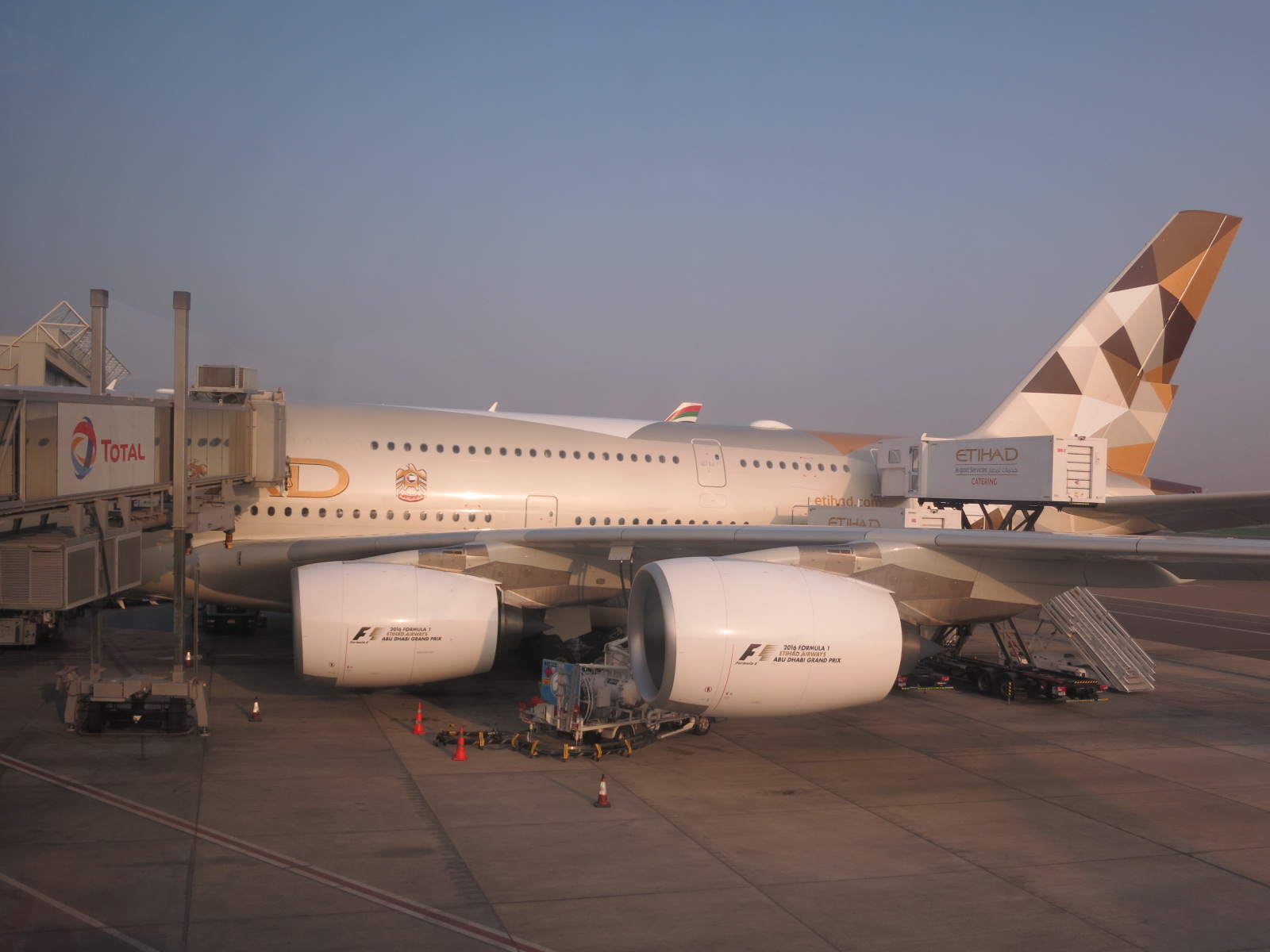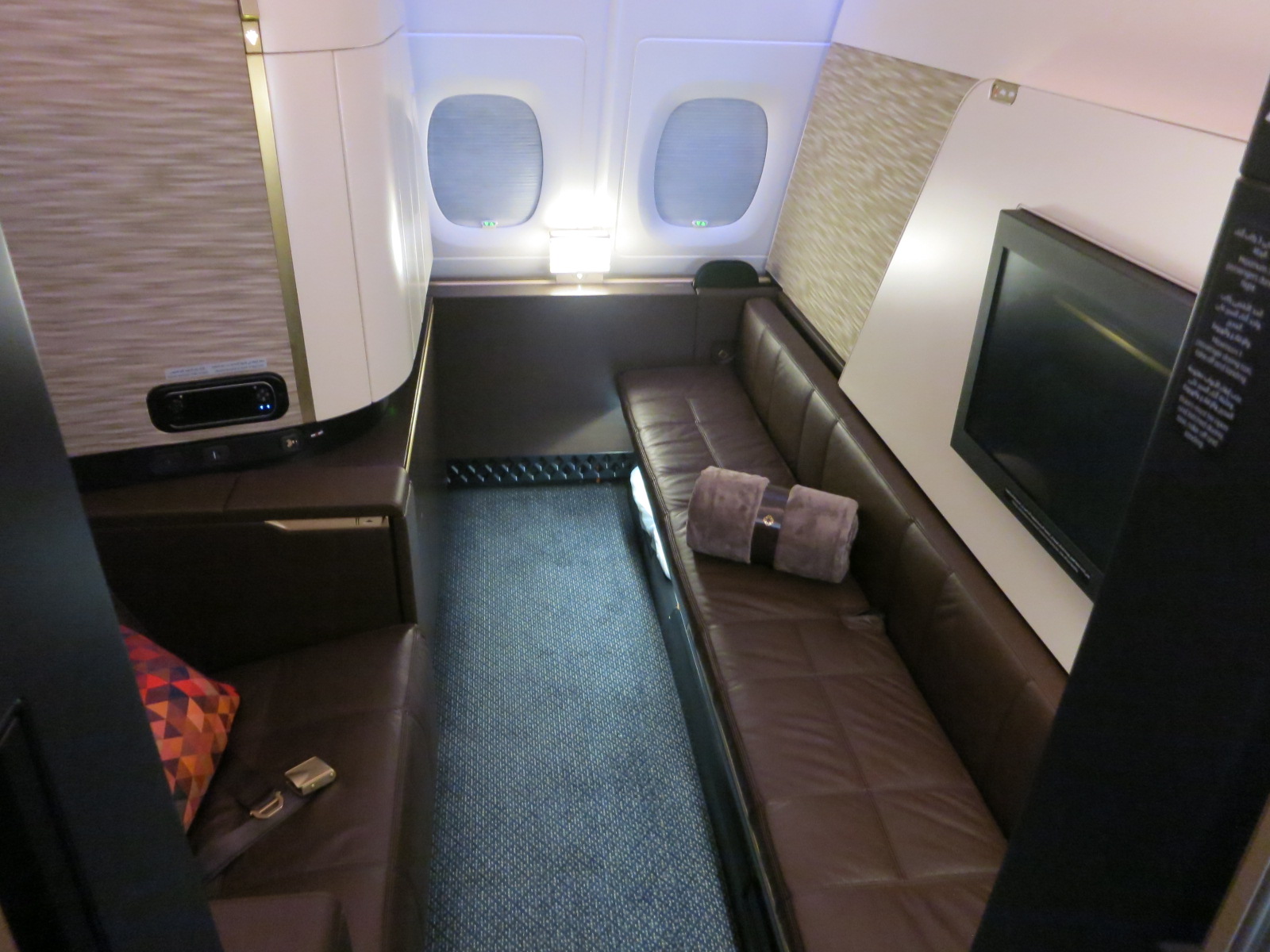The US airline industry is at an all-time high for employment. US airlines are making a plurality of the world airline profits. Yet Delta, United, and American feel so threatened that they want the US government to protect them from competition by Emirates, Etihad and Qatar — raising prices on US consumers and reducing flight convenience and choice.
Delta’s CEO is very encouraged by Donald Trump because Trump campaigned as a protectionist — though he ought to be persuadable of the importance of tourism jobs created by Gulf carrier traffic, by the jobs at Alaska and JetBlue which benefit from interlining, and for Fedex which operates a Gulf hub.

Meanwhile in the Gulf, and on the heels of a rumor that Emirates is slowing down its hiring of flight attendants, Etihad is announcing layoffs.
Abu Dhabi’s Etihad Airways, citing “an increasingly competitive landscape,” says it is making an unspecified number of layoffs.
…An Etihad statement described the layoffs as “a measured reduction of headcount in some parts of the business.”
Etihad spokesman Updesh Kapur declined to offer any specifics, though the company’s statement described the layoffs as coming “in a fair, structured and transparent way.”
‘Declining to provide specifics’ of course is the opposite of proceeding in a ‘transparent way.’
Just as the Houston market has been hurt by declining energy prices, so has the Gulf travel market. And Etihad has seen its international investments designed to drive traffic through its Abu Dhabi hub falter. Alitalia and airberlin have been money losers. Some control of Jet Airways has appeared to shift back to India.
From a customer perspective, of course, Eithad, Emirates, and Qatar all offer fantastic connectivity to India, Pakistan, and the surrounding region serving a myriad of destinations not covered by any US airline or even directly by most European ones. And they’ve developed reputations for a quality product, though I’ve long argued that American’s seats are far better than Emirates’ and Etihad’s (though Qatar’s newest business product is among the best in the world, just seek out their 787s and A350s and avoid their six-across Airbus and Boeing 777s).

Etihad Airbus A380 First Apartment


Was on Qatar A330 business flight n didn’t like it much. I found EY 778 business way better compared to QR
Thanks for the info. Could you be specific on the American seats – assume you mean business class. Which ones besides the 77W? The very latest seats (787-900?)?
The product on QR can be very different on A330/340/777 from those on A350/389/787…
While it may be true that US-flagged carriers need no subsidies or protectionist regulations to enable them to compete, the fact is, if competitiveness is the issue, the “big 3” Gulf airlines are subsidized in ways that do make competion more difficult for US and other unsubsidized carriers. If you want to drive more tourist revenue, the answer is cheaper seats all around, not just subsidizing those who can already afford Etihad’s flying apartment. Hopefully, our future trade policy will do more to encourage competitive practices among all airlines–especially the Gulf airlines–rather than “protecting” US airlines which don’t really need the counter-productive “help.”
“I’ve long argued that American’s seats are far better than Emirates’ and Etihad’s.” That’s a difficult argument to make in Etihad’s case, which has the among best and most consistent hard products of any major carrier in the premium cabins. Let’s look at only the hard product:
– Economy: Etihad has a mix of Airbus A330/A340/A380 with relatively wide seats in coach (18 inches), and 10-across Boeing 777’s with rather narrow seats. AA is also mixed: some A330’s from US Airways and 767’s, but a lot of the fleet is 10-across 777’s (except the old 772’s). I’d call it a wash here, if not a little in Etihad’s favor.
– Business: Etihad has flat-beds for all long-haul flights in business, and all have direct aisle access at every seat (except a few flights operated by partners like Air Seychelles, which are at least fully flat). The product is very consistent: on A330’s, A340’s, and 777’s it’s the same seat used by others including Asiana and Thai in their newest business class products. It’s not quite as good as the Zodiac Cirrus product AA has on the new 77W’s or the Super Diamond they got to replace the Zodiac custom forward-backward seat, but no AA product is “far better” than Etihad’s 330/340/777 product. And Etihad’s best business class seat, the Business Studio found on 787’s and A380’s, is IMO the best in the industry, with near-F levels of space and privacy. I flew it recently and found it very comfortable for sitting and sleeping. It beats all of AA’s J seats hands-down, even the newest ones. And Etihad doesn’t have 1) AA’s well-documented problem with shaking seats, 2) a bunch of old planes with angled seats still (most 757’s and quite a few 772’s), or 3) half a dozen different business class products even after the retrofit is done.
First: This is even more obvious, right? The lesser of Etihad’s two products trounces AA’s 77W first class for space and especially privacy, with fully-closing doors and an extremely spacious seat/bed. Let’s not even talk about the Apartment.
Anyway, this isn’t to say Etihad doesn’t have its issues or that service is perfect (although the soft side is a heck of a lot better than AA as well). But I just don’t get how you can say AA has “far better” seats than Etihad, especially since you’ve flown Etihad a bunch yourself.
With any negative, miserable, unhappy title of an article, you can bet it’s coming from Gary Leff. Yep, wasn’t disappointed! Do you ever cover any positive stories? You really do seem like a real Debby Downer.
@beachfan – The 787-9 Super Diamond seats are very good, with a few flaws (http://viewfromthewing.com/2016/10/08/testing-out-new-american-business-class-787-9/) however even the 787-8 and new 772 seats are much more desirable than Emirates business class (the angled 777s especially but even the A380), Etihad (in my view), and Qatar 777s and older Airbus seats.
So do their separation packages include relocation back to ones country? Or they dangle incentives and promises to people to move to the UAE “utopia” and then throw them overboard as soon as the company deems them no longer needed?
I’m sure Gary supports laying off personnel because he thinks he is too good to be subject to it.